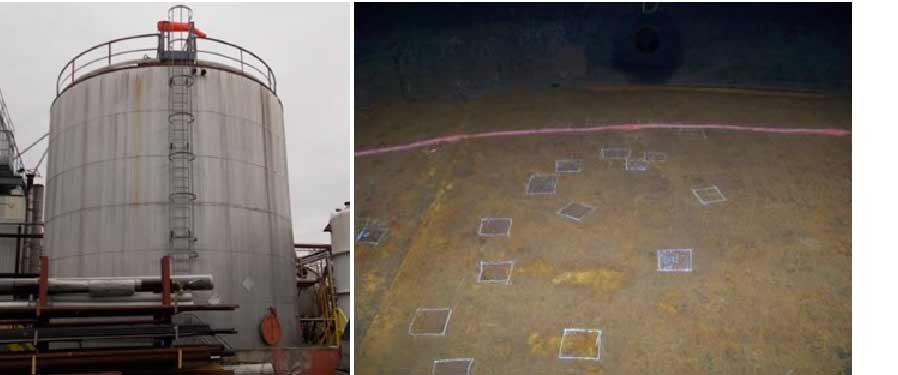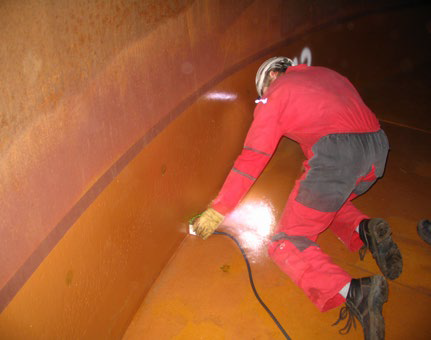Comprehending the Trick Steps in Tank Welding Inspection Procedures
Comprehending the Trick Steps in Tank Welding Inspection Procedures
Blog Article
Comprehensive Overview to Effective Container Welding Evaluation Techniques and Best Practices for Quality Control
In the world of tank welding, strenuous assessment methods are paramount for safeguarding structural stability and ensuring conformity with market laws. As we explore these necessary elements, it becomes clear that a proactive evaluation approach is not just valuable, however important for operational success in settings dealing with harmful materials.
Significance of Storage Tank Welding Inspection

Storage tank welding evaluation acts as a preventative action, determining possible flaws such as cracks, porosity, or improper joint penetration before they intensify into major problems. Normal examinations not just follow industry laws and requirements however additionally improve the longevity of the containers, lowering the demand for costly repair work or substitutes.

Visual Assessment Strategies
Employing systematic aesthetic assessment techniques is vital for evaluating the top quality and honesty of bonded joints in tanks. This method functions as the first line of defense in recognizing possible flaws such as cracks, undercuts, and not enough infiltration. The assessor must approach the job with a keen eye, using suitable devices like multiplying glasses, flashlights, and mirrors to enhance visibility.
During the assessment procedure, the assessor needs to assess the weld profile, ensuring it adheres to specified standards and standards (Tank Welding Inspection). This consists of examining the bead size, height, and combination with the base material. Assessors must also pay very close attention to the surrounding locations for signs of thermal distortion or contamination that may impact the weld's performance
Documentation of searchings for is vital; inspectors must videotape any type of anomalies, classifying them by seriousness for additional examination. This organized approach not only aids in immediate problem identification yet additionally contributes to long-lasting quality guarantee by ensuring compliance with market standards. Routine training and calibration of aesthetic examination strategies even more boost the dependability of assessments, eventually resulting in much safer and extra durable tank structures.
Non-Destructive Checking Approaches
Non-destructive screening (NDT) approaches are regularly employed in container welding evaluations to examine the integrity of bonded joints without endangering their structural integrity. These methods are essential for recognizing issues such as cracks, voids, and incorporations that can lead to devastating failures if left unseen.
Common NDT methods consist of ultrasonic testing (UT), which utilizes high-frequency acoustic waves to spot interior flaws; radiographic screening (RT), using X-rays or gamma rays to picture weld frameworks; and magnetic fragment testing (MT), which reveals surface and near-surface stoppages in ferromagnetic products (Tank Welding Inspection). Fluid penetrant testing (PT) is also extensively made use of, capable of identifying surface-breaking issues by applying a fluorescent or color comparison dye
Each NDT approach has its certain applications and advantages, making it crucial for examiners to choose the ideal method based upon the material and the sort of weld being evaluated. The assimilation of these NDT approaches into the assessment procedure improves the general quality assurance framework, making sure that bonded storage tanks meet safety and security and performance requirements. Eventually, NDT plays a vital duty in preserving the integrity and durability of container structures in numerous industrial applications.

Documentation and Coverage
Making sure extensive documents and reporting during tank welding assessments is critical for preserving compliance with market standards and promoting reliable communication among stakeholders. Proper paperwork acts as a thorough record of examination activities, findings, and any rehabilitative other actions taken throughout the welding process. This information is necessary not only for quality guarantee but likewise for audits and regulative testimonials.

A well-structured examination report should consist of details such as the date of assessment, names of inspectors, welding treatments employed, materials utilized, and any kind of deviations from developed requirements. Furthermore, photographs and layouts can improve the clarity of the report, giving visual context to the searchings for. It is also essential to record any non-conformities together with their resolution, ensuring that all stakeholders are educated of potential risks and the actions taken to alleviate them.
In addition, maintaining a centralized database for all examination reports enables for easy retrieval and evaluation, cultivating a society of openness and responsibility. By prioritizing meticulous documents and coverage, companies can not only copyright quality control however likewise enhance their credibility within the market, ultimately causing boosted security and functional efficiency.
Constant Renovation Practices
Constant renovation practices are crucial for improving the top quality and effectiveness of storage tank welding evaluations. One effective approach entails routine training and upskilling of examination check out this site personnel to look at this site remain abreast of the latest welding innovations and criteria.
Furthermore, making use of data-driven evaluation allows companies to track evaluation outcomes, determine trends, and pinpoint locations for renovation. Employing devices such as source analysis can help in comprehending the underlying issues leading to defects, enabling targeted treatments. In addition, soliciting responses from evaluation teams and stakeholders develops a collaborative atmosphere that urges innovative services.
Integrating innovative technologies, such as automated assessment systems and real-time surveillance, can considerably boost the precision and rate of inspections. Routine audits of the examination procedures additionally contribute to a society of accountability and continuous improvement. Ultimately, these continuous improvement methods not just boost the top quality of storage tank welding evaluations however additionally add to overall functional excellence and customer fulfillment.
Conclusion
To conclude, efficient tank welding assessment is critical for making certain the architectural stability and safety of storage space systems, especially those taking care of hazardous products. Employing a mix of visual assessment techniques and non-destructive screening approaches promotes the very early recognition of defects, therefore keeping conformity with market requirements. Furthermore, durable paperwork and a dedication to constant renovation boost quality guarantee practices. Eventually, these measures add significantly to operational quality and the prevention of potential safety and security threats.
Report this page